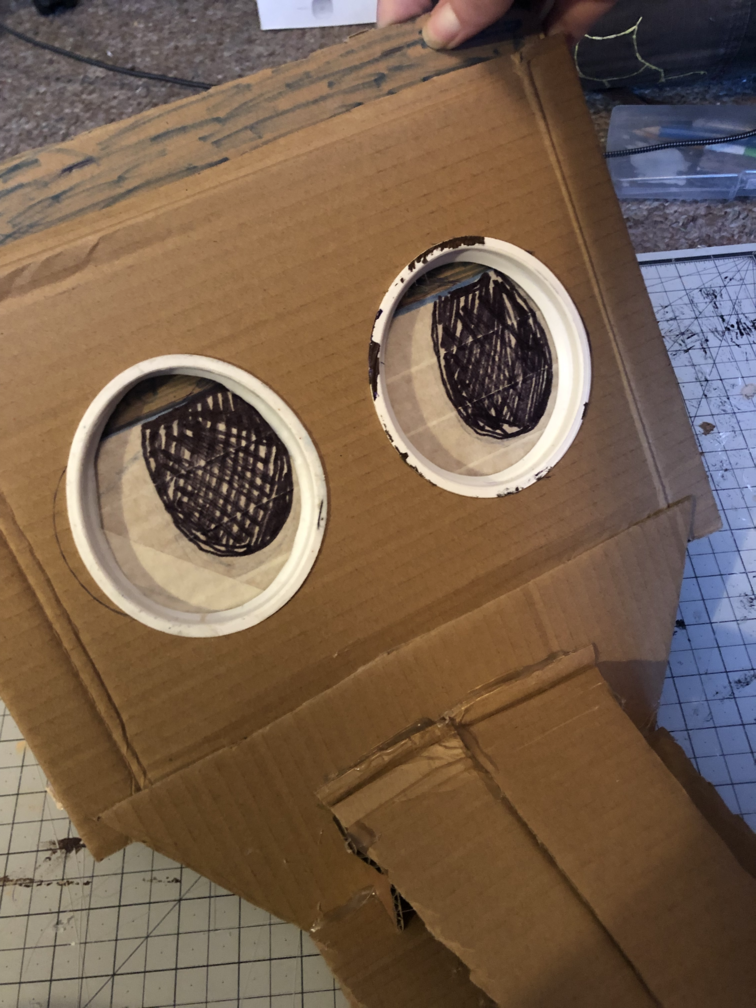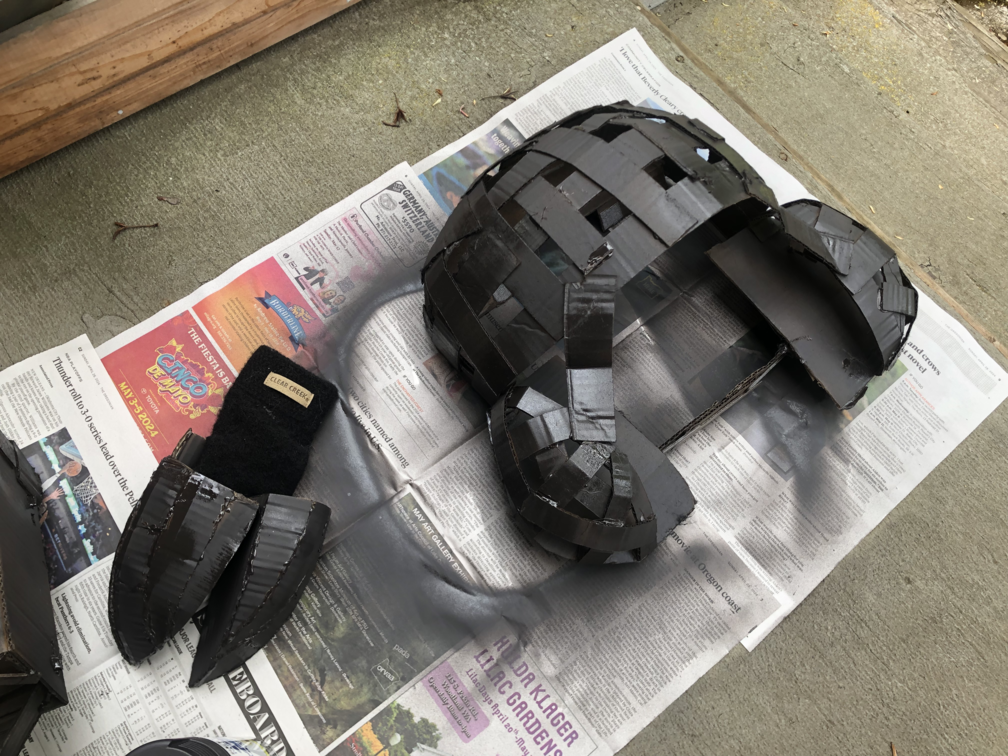Process
April 22nd
I started off with the eye mechanism. This took a lot of prototyping. I didn't have access to any globes for eyes, but still wanted them to be able to move. So I started by making two eye-sized holes in a piece of cardboard, and placing another piece behind it with the eyes and eyelids drawn on. The cardboard can be moved back and forth so it looks like both eyes move in unison. I attempted to create a system for this that allowed it to be controlled by the same hand as the mouth, but the distance needed to travel was too far with such a simple mechanism. So the eyes are controlled by a second hand. I would likley have had to control it this way regardless, since it's so heavy that I need all my fingers to hold it up.
My plan with this puppet is to include it in a piece about fixing old animatronics, so I want it to be able to be dissasembled in some ways. The main plan is to be able to remove the full faceplate to reveal a simpler "mech" underneath. I also want one of the arms to be removable in full.
Once the eye prototype and the mouth plate were in place, I attached the new face plate that I would be building off of. It attaches to the mech with velcro next to the eyes and at the base of the mouth, with a seperate piece for the lower jaw. I built it up with strips of cardboard and chunks of felt.
April 23rd
After I had the shape that I liked, I covered it in sheets of felt for a smooth finish to pattern off of.
The head also has a back piece which is also seperate from the main mech. Since it's in the back it's not as build out and structural as the front. This also slides over and attaches with velcro.
It was time to design the character! I dug into my fabric supply and came up with enough white and black fur fabric to make a cow design.
Next was patterning the fur. I covered half of the face in masking tape, and taped a big piece of scrap fabric onto the back of the head to pattern the back fur. I first drew where I knew the different colors would be, then split it farther into where I would have to cut the different pieces to get the contours to curve correctly. I carefully peeled each section off the head, cut darts until they lay flat, and traced them onto paper bags to make patterns. It ended up taking quite a few pieces to get the right shapes I needed.
April 25th
I managed to get everything cut and sewn fairly quickly, using my sketch and the lines drawn on the fabric to keep everything lined up.
The fur was glued to the front faceplace only, and wraps around the rest of the head and velcros together in the back.
April 26th
First I had to pick a fabric for the inside of the ears, sine my scrap supplies were starting to run low.
For the ears, I made a pattern and cut two from thin cardboard, then used the same pattern to cut pices of fabric. With a ruler I pre-scored the cardboard so it would curve better. I glues down the inside fabric, and then the outer fabric around and on top of it, leaving the back loose so it could be stuffed. After stuffing, I folded over the top of the ear and sewed it to the base on the other side.
The ears I sewed to the fur, they're only attached to the fur layer.
I'm still testing out which color of hair I'm going to use for the top of the head, here.
Time for our first material I had to buy just for the project, a pool noodle!
I cut off a small chunk of the pool noodle to carve into a nose. I cut the lines for the nostrils and curved one piece under the other to make the sharp cuttoff I was looking for. I carved down the rest of the nose a little before covering it in fabric, and glued it on around the back. I trimmed down the fur of the nose before glueing it down.
I started working on the gloves today too. Using cardboard, I built out hoof shapes and glued them onto a pair of black gloves.
May 1st
Had to wait for the rain to give us a break, but I was finally able to spray paint the inner pieces. I seperated the mech, front faceplate, lower jaw, and back plate so that I could paint the mech and back plate. I also painted the hooves on the gloves.













































 Website template:
Website template: